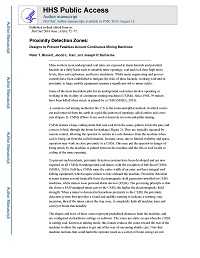Mining Publication: Proximity Detection Zones: Designs to Prevent Fatalities Around Continuous Mining Machines
Original creation date: June 2016
Mine workers in an underground coal mine are exposed to many hazards and potential hazards on a daily basis such as unstable mine openings, coal and rock dust, high noise levels, fires and explosions, and heavy machinery. While many engineering and process controls have been established to mitigate the risks of these hazards, working with and in proximity to large, mobile equipment remains a significant risk to miner safety.
Some of the most hazardous jobs for an underground coal miner involve operating or working in the vicinity of continuous mining machines (CMMs). Since 1984, 39 miners have been killed when struck or pinned by a CMM, per 2015 MSHA data.
NIOSH researchers have developed the intelligent proximity detection (iPD) system, which differs from conventional systems in that it utilizes multiple stop zones to selectively disable potentially dangerous machine motions while allowing safe motions to continue uninterrupted.
Authors: P Bissert, J Carr, JP Ducarme
See Also
- An Active Proximity Warning System for Surface and Underground Mining Applications
- Effect of Operator Position on the Incidence of Continuous Mining Machine/Worker Collisions
- An Environmentally Robust Proximity Warning System for Hazardous Areas
- Innovative Safety Interventions: Feasibility of Using Intelligent Video for Machinery Applications
- Intelligent Proximity Detection to Improve Miner Safety
- Proximity Detection
- Proximity Detection With Selective Machine Shutdown
- Recommendations for Evaluating & Implementing Proximity Warning Systems on Surface Mining Equipment
- Test Results of Collision Warning Systems for Surface Mining Dump Trucks
- Test Results of Collision Warning Systems on Off-Highway Dump Trucks: Phase 2
- Content source: National Institute for Occupational Safety and Health, Mining Program


 ShareCompartir
ShareCompartir
